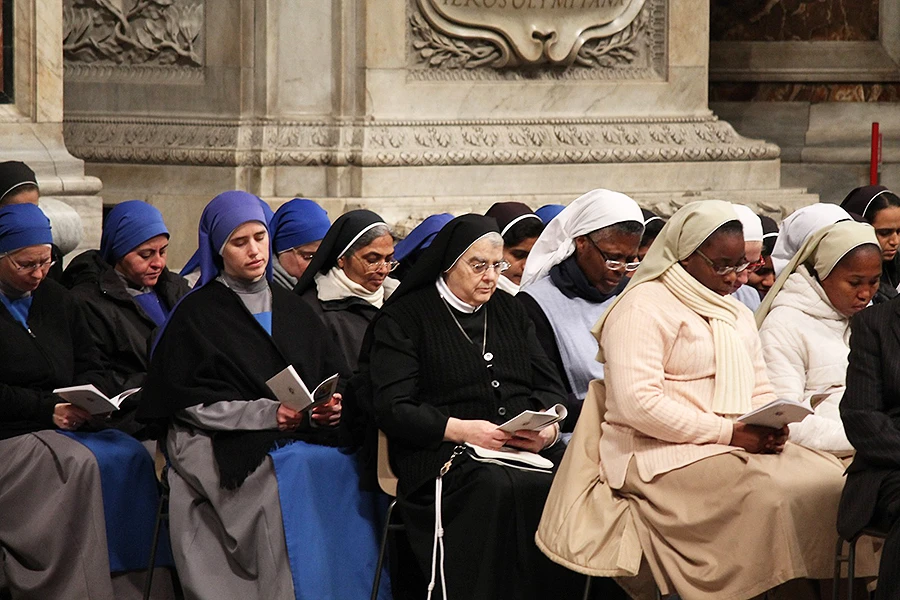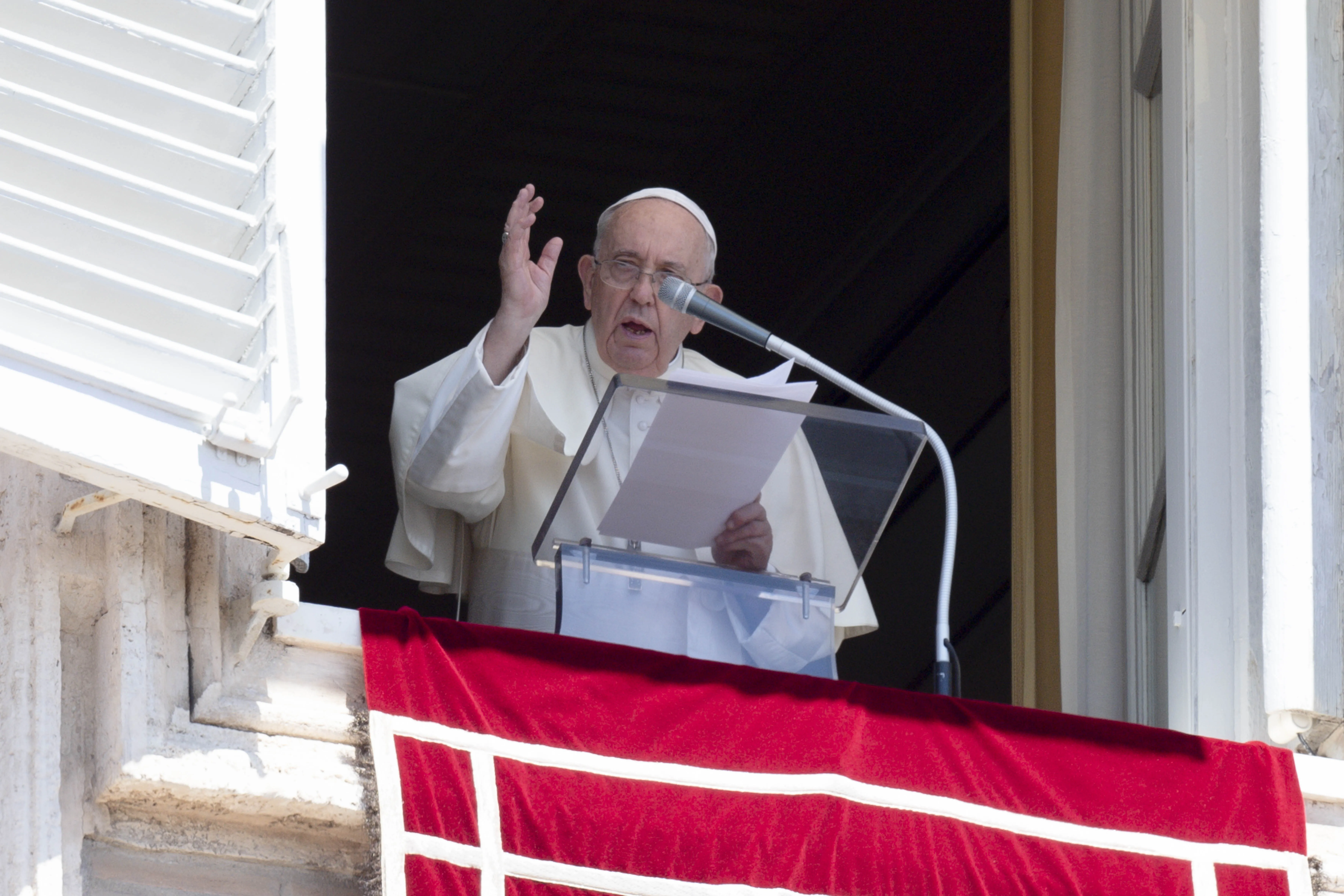
Vatican City, May 15, 2018 / 01:00 pm (CNA/EWTN News).- The Vatican published an instruction Tuesday aimed at applying norms established in Pope Francis’ 2016 apostolic constitution on women’s contemplative orders, which emphasizes the need for networks of monasteries in contemplative life. The instruction states that all monasteries of nuns must be affiliated with a federation, or organization, of religious houses.
Published May 15, the document concerns the nearly 38,000 nuns around the world in contemplative religious orders, and underscores that these religious institutes, “wholly devoted to contemplation, always occupy an eminent place in the mystical body of Christ.”
Therefore, even if there should be an urgent need for assistance in the active apostolate, as is the charism of some active religious orders, members of contemplative communities should not be called to help in pastoral ministry, the document states.
The instruction, entitled Cor orans, or “Praying heart,” was drafted by the Vatican’s Congregation for Institutes of Consecrated Life and Societies of Apostolic Life. It includes detailed regulations for the establishment and administration of monasteries for contemplative nuns, including both the legal and spiritual aspects of monastic life.
It also covers the transfer and possible suppression of monasteries, ecclesial vigilance, relations with the local diocesan bishop, means of communication, the different types of cloister, and formation.
The 34-page document “intends to make clear the provisions of the law, developing and determining the procedures in the execution” of the apostolic constitutions “Vultum dei Quaerere,” published by Francis in 2016, and “Sponsa Christi Ecclesia,” published by Pope Pius XII in 1950.
The new instruction was presented by the secretary of the congregation on religious life, Archbishop José Rodríguez Carballo, in a press conference May 15.
Pope Francis’ 2016 constitution abrogated only a few points of an earlier constitution promulgated by Pope Pius XII. Therefore, the instruction states, the two constitutions are considered “the legislation in force” and should be read “in a shared perspective.”
The most significant change the instruction puts forth is the obligation for individual monasteries, though autonomous, to belong to a federation of monasteries, connected either through a similar charism or through geographical location.
Pope Pius XII, in “Sponsa Christi Ecclesia,” encouraged the formation of these federations to prevent isolation, provide networks for mutual help, and for the preservation of the common charism, but until now membership was not obligatory.
The new norm gives monasteries one year to comply, after which time the Vatican’s office for religious life will assign monasteries to federations.
“This insistence,” Archbishop Carballo said, is due to many problems which have come about in the last couple dozen years from “the isolation of some monasteries, on the one hand, and from the importance of walking, even in monastic life, towards an ecclesiology of communion, on the other.”
Another new aspect of the norms is the requirement that individual monasteries have at least five members, three of these having made solemn professed vows, in order to remain open. This is a change from the previous requirement of at least four members in a monastery.
The suppression of individual monasteries is a solution which is “painful as much as necessary,” the document states.
Additionally, if the number of community members with solemn professed vows drops to five, the monastery loses the right to the election of its own superior, and the president of the monastery’s federation is obliged to inform the Holy See.
Unfortunately, “this is a provision that certainly concerns a substantial number of monasteries, to which we will therefore be asked to become aware of our own reality, in a dialogue with the Holy See and with the reference figures prepared by the commission,” Carballo said.
If you value the news and views Catholic World Report provides, please consider donating to support our efforts. Your contribution will help us continue to make CWR available to all readers worldwide for free, without a subscription. Thank you for your generosity!
Click here for more information on donating to CWR. Click here to sign up for our newsletter.






Bishops conferences are free to make-up doctrines out of whole cloth but you evil contemplatives must be suppressed!
Women’s contemplative communities in the crosshairs of Jesuit interpretation of the charism of every monastery.
This spells the end of contemplative life in the Church. In fifty years it will be a memory. Of course, by that time, the theology of Roman Catholic priesthood will have been replaced with some sort of post-Christian clinical profile. Apostolic communities of men and women will be long forgotten.
The contemplative nuns were our last hope. They will join the charism of the monastic spa evolving among the Trappists and then — evaporate.
Perhaps only a Teresa of Jesus can take this crew of male malefactors down.
Where did the Franciscan money disappear to? The above prelate should certainly not be in charge of religious life as he mad a shambolic mess with the OFM’s
Monasteries functioning essentially in total autonomy can and do present specific dilemmas – but the solution need not be federations. No one, no construct, is better than a faithful prioress or abbess. Imposing federation upon all autonomous communities is merely a means by the current nefarious element proudly reigning to abrogate the freedom of faithful contemplative religious and undermine the authentic charism of the several orders. Congealed into a groups they are best accessed for “reformation” into the mold acceptable to the New Paradigm.
This is merely the soft dissolution of the monasteries in the program of protestantization of Roman Catholicism on its way to metamorphosis into a vacuous cultural entity occupying a place once held by a religion.
Religious life is the canary in the mine shaft of Roman Catholicism. Faith AND works. “Ora et labora.” Virtually all congregations are on the precipice of extinction. The contemplatives while diminished in numbers do at the moment hold some hope for survival. The extinction of authentic contemplative life lived emulating the model of the Desert Fathers and the great founders such as Bruno, Bernard and Teresa will announce a bitter and apocalyptic moment.
But is that not the design?
Absolutely and clearly the design.
Simply more Francis-church undermining what is ancient, holy, and very Catholic.
It is all about control, dear pewsitters, nothing less.